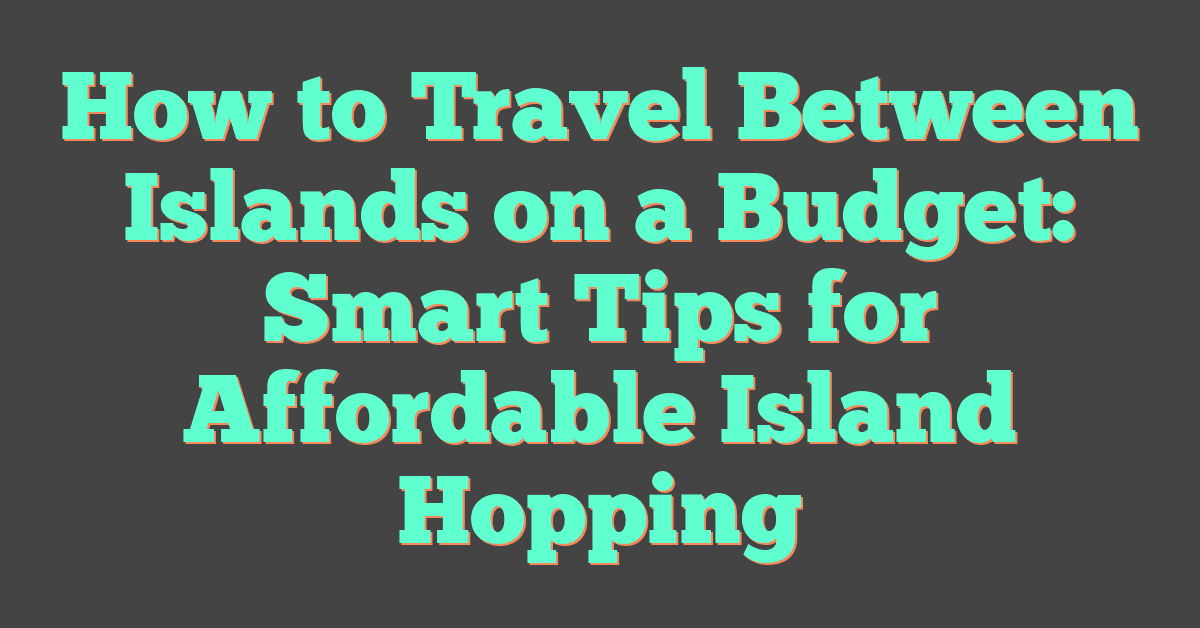Whenever I plan a trip to Hawaii, I build a special Hawaii reading list to get into the spirit.

Reading stories, history, and legends from local authors helps me understand more about the islands before I step off the plane.
The best books to read before a trip to Hawaii open a window into the state’s unique culture, breathtaking landscapes, and the spirit of Aloha.

Choosing the right Hawaii books makes my visit feel even more meaningful.
These stories bring the real Hawaii to life, from its lush rainforests and beaches to its rich traditions.
I’m excited to share the top Hawaiian books I recommend for anyone heading out on a Hawaiian adventure or wanting a taste of the islands at home.
Why Read Hawaiian Books Before Your Trip?

Reading books about Hawaii helps me better understand native Hawaiian culture, issues of identity and sovereignty, and the daily life of the islands.
By learning from the voices and stories of Hawaii, I connect more deeply with the people and places I visit.
Deepening Your Appreciation of Hawaiian Culture
When I read Hawaiian books, I learn about the unique traditions and values that shape the islands.
Stories show everyday life, legends, and family bonds, helping me see why certain customs matter so much in the Aloha State.
Books by Hawaiian authors or about native Hawaiian culture teach me about important topics like identity, language, and sovereignty.
For example, I read about the impact of colonization or the meaning behind hula, lei, and local celebrations.
Knowing the history of the Hawaiian monarchy or reading about the struggles for native rights gives me a deeper respect for Hawaii’s ongoing journey.
I see how nature—like volcanoes, rainforests, and the sea—plays a big part in the culture.
Reading about the creation of places such as Hawaii Volcanoes National Park or learning how people care for the land helps me understand why respect for nature is at the heart of many Hawaiian beliefs.
Enhancing Your Travel Experience
Picking up the right book before my trip helps me enjoy Hawaii in a more meaningful way.
When I explore the Hawaiian islands, familiar names, stories, or landmarks feel more alive because I know their background.
If I’ve read about the history of a town or the meaning behind a sacred site, I visit with real curiosity instead of just snapping pictures.
This makes trips to places like Hawaii Volcanoes National Park more special, since books often share stories about the land, legends, and the people.
Reading also helps me avoid simple cultural mistakes.
I learn local etiquette and what is considered respectful.
When I join local events or talk to someone from Hawaii, I feel more confident and connected.
Must-Read Fiction Set in Hawaii

Hawaii’s unique blend of cultures, history, and landscapes inspires many powerful novels.
These books shine a light on Hawaiian families, daily life, and the struggles people face finding their own place and identity.
Family Sagas and Generational Stories
Family stands at the center of many Hawaii novels.
I recommend Hawaii by James Michener for readers who want to dive into the islands’ history across generations, from ancient times to the modern era.
This sweeping saga shows big changes and adaptation.
Kiana Davenport’s Shark Dialogues is another family saga worth reading.
Her story follows four generations of Hawaiian women, blending real history and drama.
These novels highlight how families adapt and struggle with changing traditions.
For a modern take, The Descendants by Kaui Hart Hemmings focuses on a Hawaiian family facing tough decisions and old secrets.
Hemmings writes about family ties and loyalty in a genuine and moving way.
Here’s a quick list of popular family saga novels set in Hawaii:
| Title | Author |
|---|---|
| Hawaii | James Michener |
| Shark Dialogues | Kiana Davenport |
| The Descendants | Kaui Hart Hemmings |
Recent Releases and Contemporary Novels
When I want something modern, I look for recent releases.
Sharks in the Time of Saviors by Kawai Strong Washburn is a favorite.
This novel mixes magic realism with the everyday challenges of a Hawaiian family dealing with loss, hope, and dreams.
Sara Ackerman writes historical fiction with heart.
Her books, such as Red Sky Over Hawaii and The Lieutenant’s Nurse, bring history to life and show what living in Hawaii during wartime was like.
If you enjoy books that reflect today’s Hawaiian life and connections, these novels paint clear pictures of modern Hawaii and its people.
Each one explores how local families adapt to a changing world.
Stories of Love and Identity
Themes of love and identity run deep in fiction set in Hawaii.
The Goddesses by Swan Huntley explores marriage and belonging, with Hawaii as a backdrop that both tempts and challenges.
Lois-Ann Yamanaka’s books (like Blu’s Hanging or Heads by Harry) are powerful reads about growing up, self-discovery, and fitting in.
The characters deal with issues like prejudice, family, and what it means to be Hawaiian.
Rachel Michaels’ novel Freckled looks closely at identity.
It follows a young girl’s journey to find her own path after growing up between two cultures in Hawaii.
These stories show how characters find strength and meaning by facing tough truths about love, roots, and who they are.
Exploring Hawaii Through Non-Fiction

Reading non-fiction about Hawaii gives me insight into real events, unique people, and living cultures.
These books help me understand the islands beyond what I see in travel guides and at scenic spots.
Hawaiian History and Politics
When I began learning about Hawaii’s past, I found “Shoal of Time” by Gavan Daws to be a great starting point.
This book traces Hawaii’s history from Captain Cook’s arrival through statehood and gives important context about the Hawaiian monarchy and the influence of Western settlers and businesses.
The book makes complex history feel understandable without skipping over difficult moments, such as the overthrow of Queen Liliʻuokalani and the end of the monarchy.
“Hawaii’s Story by Hawaii’s Queen” is another intriguing read.
Queen Liliʻuokalani wrote this memoir herself and shares a first-hand account of the struggles she faced as Hawaii’s last reigning monarch.
By reading her words, I get a sense of her views on the rapid changes in politics, loss of sovereignty, and the effects on her people.
For a more recent take, “Captive Paradise” describes how Hawaii’s culture and politics shifted under outsiders’ influence.
It shows how figures like King David Kalākaua worked to navigate these changes.
Travels, Memoirs, and Local Perspectives
To experience what daily life feels like in Hawaii, I turn to memoirs and essays from people who have lived or traveled there.
One classic is Mark Twain’s “Roughing It”, where he humorously recounts his travels around the islands in the 1860s.
His stories are funny and full of detail about a time when Hawaii looked very different.
Personal stories like “Born in Paradise” and “Freckled” show the struggles and joys of growing up on the islands.
The blend of memories and culture makes these works feel authentic.
I also enjoyed “Waimea Summer” by John Dominis Holt, a semi-autobiographical novel about coming of age in rural Hawaii.
Memoirs and essays by locals offer honest perspectives that I can’t find in fiction.
They show traditions, social changes, and the challenges of balancing Hawaiian heritage with modern life.
Some travel-based books are written by visitors, but the voices of native Hawaiians and long-time residents are especially valuable for a deeper understanding.
Polynesian Roots and Myths
The story of Hawaii connects to greater Polynesia.
“Sea People: The Puzzle of Polynesia” explores the mysterious history of the first Polynesians who voyaged across the Pacific.
I learned how these navigators used stars, winds, and waves to discover and settle islands across thousands of miles of ocean.
Modern non-fiction such as “Hawaiki Rising” by Sam Low excited me with its account of the Hōkūleʻa canoe voyages in the 1970s.
These journeys sparked a Hawaiian cultural revival by showing that ancient Polynesian navigation techniques still work.
The book blends history, adventure, and identity.
To learn more about traditional stories, I turn to collections of Hawaiian myths, legends, and oral histories.
These tales, rooted in ancient beliefs, explain the islands’ creation, gods, and hero figures.
They give important context for sites and traditions I see throughout Hawaii and connect the past and present.
Classic Works by Local and Native Authors

Reading authentic Hawaiian voices helps me understand the islands far better than any guidebook.
Many local and Native authors tell stories that share real experiences, traditions, and struggles in Hawaii.
This gives me more respect and appreciation for Hawaiian culture.
Celebrated Novels by Hawaiian Writers
When I want to learn about Hawaii from the inside, I often turn to Kiana Davenport, who wrote Shark Dialogues and House of Many Gods.
Her novels mix history, family, and the impacts of colonization.
Kaui Hart Hemmings is another favorite.
Her novel The Descendants explores family, identity, and land ownership in modern Hawaii.
I also like Lois-Ann Yamanaka, who uses Hawaiian Pidgin in works like Wild Meat and the Bully Burgers.
Her writing captures voices and childhood experiences unique to Hawaii.
These books stand out for how they capture different sides of the islands—history, multi-racial families, and the changes brought by tourism.
Local authors help me see everyday life in Hawaii in a new way.
You can find more recommendations for novels and fiction by Hawaiian and Pacific Islander authors on Penguin Random House’s list.
Influential Voices in Hawaiian Literature
Reading writers who have shaped how Hawaii is seen, both locally and outside the islands, is important. John Dominis Holt wrote essays and stories about Hawaiian identity.
He revived interest in Native Hawaiian culture during the Hawaiian Renaissance of the 1960s and 1970s. Kristiana Kahakauwila stands out for her clear, honest look at life in Hawaii.
She explores themes like belonging, family, and culture in her story collection This Is Paradise: Stories. Books by these authors share history, language, and values, offering closer local perspectives.
Other notable writers, like TW Neal and Gaellen Quinn, add to this rich mix of voices.
Short Stories and Poetry
Short stories and poetry let readers experience the rhythms and feelings that shape Hawaii. This Is Paradise: Stories by Kristiana Kahakauwila shows how people live and cope with daily realities on the islands.
Her stories are honest and unforgettable. Poetry also plays a special role.
Poets use Hawaiian Pidgin, traditional forms, and strong imagery to share thoughts on identity, nature, and legacy. Anthologies and collections by local authors reveal dreams and struggles across generations.
Lists like Honolulu Magazine’s selection of essential books highlight both short stories and poetry for anyone exploring real Hawaiian voices.
Historical Insights: Hawaii’s Past in Literature

Books about Hawaii’s past let readers see beyond the beaches and volcanoes. They reveal stories of cultural change, immigration, and conflict that shaped island life.
Immigration and Identity in the Islands
Asian immigrants play a big role in Hawaii’s history. In the late 1800s and early 1900s, workers from Japan, China, Korea, and the Philippines arrived to work on plantations.
The “picture bride” tradition stands out—women married men they had only seen in photos before arriving in Hawaii. This created new families and blended cultures.
Alan Brennert’s novels show how these backgrounds shaped identity. His book “Moloka’i” describes how people found a sense of belonging, even while facing disease and discrimination.
Histories such as “Shoal of Time” provide details on how immigration changed food, language, religion, and customs. Lists from Love Big Island suggest books about Hawaiʻi’s migration stories.
World War II and Hawaii
World War II changed Hawaii. After the attack on Pearl Harbor in 1941, the islands became a military zone.
Many Japanese Americans living in Hawaii faced suspicion, and some went to internment camps. Stories from this period show the conflict between loyalty, fear, and identity.
Books recommended by Literary Hub document daily lives during wartime. They share personal stories of internment, increased military presence, and the struggle to keep community ties.
These books help readers imagine life in Hawaii under martial law and connect the islands’ history to world events.
Iconic Books About Molokaʻi and Kalaupapa

Molokaʻi’s past connects deeply to Kalaupapa, known for its leprosy colony. Novels and historical accounts reveal true stories of hardship, hope, and resilience.
Stories from the Leper Colony
When I read Molokaʻi by Alan Brennert, I learned about life in the Kalaupapa leper colony. The book follows Rachel, who as a child moves to Kalaupapa after being diagnosed with leprosy.
Through her eyes, I saw the struggles people faced and how they formed strong communities. Brennert’s writing shows the island’s beauty and sorrow.
Daughter of Molokaʻi, also by Brennert, continues Rachel’s story through her daughter’s journey. These novels show the harsh realities of the disease and the spirit of those who lived there.
Many readers consider these books among the best fiction about Kalaupapa and Molokaʻi’s history.
Travel Guides and Handy Resources

When planning my Hawaii trip, I wanted guides that were clear and practical. I looked for books with honest advice, accurate maps, cultural background, and tips on hidden spots.
Oahu’s Essential Reads
On Oahu, I used the Oahu Revealed guidebook. It covers famous places like Waikiki and Pearl Harbor, plus quiet beaches and hiking trails.
Key features:
- Detailed neighborhood breakdowns
- Easy-to-read maps and directions
- Honest reviews of restaurants and activities
The book shares safety tips, like beach currents, which helped me plan better. It goes beyond tourist attractions and explores local culture and hidden gems.
Oahu Revealed is a trusted guidebook for Oahu visitors.
Best Books for Exploring Kauai
For Kauai, The Ultimate Kauai Guidebook was my main resource. This book gives detailed info about each region, such as Hanalei Bay, Waimea Canyon, and the South Shore.
What I liked most were:
- Updated trail conditions and hiking advice
- Listings for farmers markets, local food spots, and scenic drives
- Color photos for easy trip planning
The Ultimate Kauai Guidebook is easy to use with indexed maps for the whole island. Honest opinions made my trip less stressful and more fun.
If you’re looking for a top pick for Kauai, check this essential Kauai travel guidebook that travelers recommend.
Big Island and Maui Guidebooks
On the Big Island, I used guides with updates about the active volcanoes, Kona district, and climate zones. A good guidebook helped me plan visits to Hawaii Volcanoes National Park and coffee farms around Kona.
It pointed out lava tubes, snorkeling sites, and scenic beaches. For Maui, the best guidebooks covered the Road to Hana, upcountry towns, and snorkeling in Molokini Crater.
They listed places for whale watching and local food trucks. I found a guide with charts and lists, which made picking day trips easier—especially for busy areas like Lahaina and Kihei.
A list of top Hawaiian travel books offers detailed recommendations for both islands. I always check the newest edition before my trip.
Genre Highlights: Mystery, Family, and More

Some Hawaiian books use suspense and secrets to hook readers with mysteries. Others focus on family, showing strong connections and how Hawaiian culture shapes people.
Hawaiian Mysteries and Thrillers
The best Hawaiian mysteries are set in beautiful places but filled with tension and drama. These novels explore topics like crime, family secrets, and even death.
The lush landscape makes each mystery feel intriguing. “Murder on Moloka’i” by Chip Hughes features a smart local detective solving crimes tied to the islands’ past.
“Moloka’i” by Alan Brennert weaves mystery into a family saga, showing how families stick together in tough times. For more, I browse The Uncorked Librarian’s curated guide.
These stories highlight themes of identity, tradition, and how locals cope with change.
Children’s and Young Adult Books
For younger readers, I look for books that celebrate family, friendship, and culture. Many children’s and young adult stories set in Hawaii include legends, local animals, and island adventures.
These books teach about respect and the value of ohana, which means family in Hawaiian. “The Shark King” by R. Kikuo Johnson is a graphic novel retelling a Hawaiian legend.
For teens, “Under the Blood-Red Sun” by Graham Salisbury blends history and family, showing life in Hawaii during World War II. This helpful Hawaii reading list offers suggestions for all ages.
These books help kids and teens understand Hawaiian history and culture while keeping stories fun and easy to read.
Biographies, Memoirs, and Real-Life Stories

Reading about real people’s lives in Hawaii adds depth to my travels. Learning about local heroes and their stories gives me a true sense of place and culture.
Famous Hawaiian Figures
One standout biography I keep hearing about is Waterman: The Life and Times of Duke Kahanamoku.
Duke Kahanamoku is an Olympic swimmer and the father of modern surfing.
He rose from Waikiki to international fame and helped define Hawaii’s sports culture.
Duke’s achievements go beyond winning medals.
He spread surfing worldwide and shaped how people view Hawaii.
Books about figures like Duke Kahanamoku let me see Hawaii through the eyes of those who lived it.
If you want more stories, lists like Biographies & Memoirs of Authors often include memoirs about people who shaped Hawaiian history.




